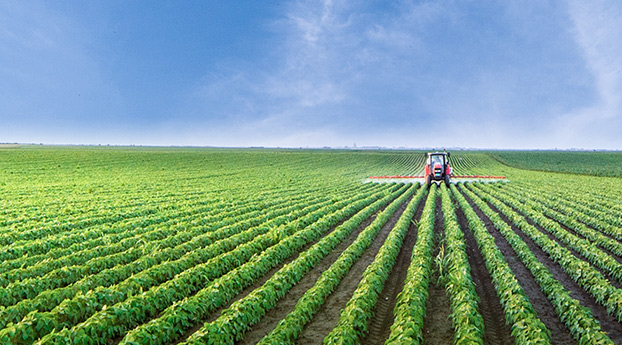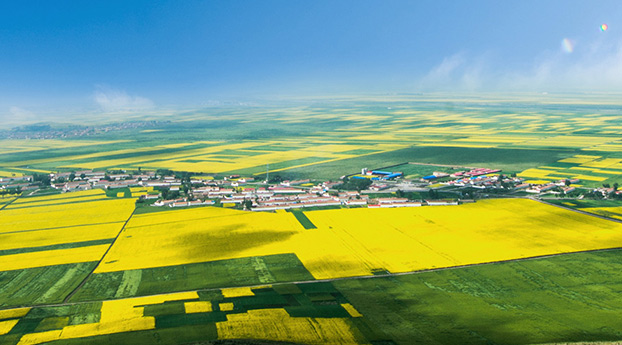Study on the influence of social network on farmers' adoption of water-saving irrigation technology
Release time:2015-01-30 Views:84
【作者】 王格玲;
【导师】 陆迁;
【作者基本信息】 西北农林科技大学 , 农业经济管理, 2016, 博士
【副题名】以甘肃民勤为例
【摘要】 水资源短缺、农业用水浪费严重是制约中国粮食安全和影响农业变革的瓶颈。在干旱半干旱地区推广节水灌溉技术具有重大战略意义。然而仅仅依靠政府推广组织推广节水灌溉技术存在诸多问题。已有研究发现,社会网络具有提供共享技术信息、降低采用风险的功能,作为农户技术信息获得的另一主要渠道,能够解决农户技术需求显化问题、弥补正式组织缺陷,在农户技术采用中扮演着重要角色。那么,在现有政府推广服务体系下,社会网络影响农户节水灌溉技术采用的理论依据是什么?社会网络对农户节水灌溉技术采用的影响关系怎样、影响路径如何?社会网络和政府推广服务在共同促进农户节水灌溉技术采用时存在何种关系?这些问题的回答有利于拓宽现有政府服务推广路径、为农户节水灌溉技术推广提供创新思路。基于此,本研究采用甘肃民勤农户调查数据,沿着社会网络影响农户节水灌溉技术采用的影响关系——影响路径——交互影响这条逻辑思路展开,考察农户节水灌溉技术采用的社会网络效应。研究的主要内容及结论如下:第一,社会网络识别、测算和特征。通过对有关社会网络资料的学习,界定了社会网络的内涵,依据社会网络内涵对社会网络结构做出划分,并构建了社会网络指标体系,采用因子分析测度社会网络,并对比分析技术采用者与未采用者社会网络差异。结果发现:社会网络是个人社会联系网中的信息、信任及互惠的规范,它以网络资源为基础,以群体活动长期形成的规则与制度为保障,通过各成员间的学习、互动、互惠与信任维持其运行;依据社会网络内涵,可将社会网络划分为网络学习、网络互动、网络互惠、网络信任四个维度;通过测算农户社会网络,发现技术采用者的社会网络存量总是大于未采用者的。第二,农户节水灌溉技术采用现状与问题。首先交待了本研究样本数据来源及调研情况,通过描述性分析对甘肃民勤农户节水灌溉技术采用现状做出分析,并提出目前农户节水灌溉技术存在的问题。结果表明:农户对水资源稀缺性感知强烈;大多数农户对节水灌溉技术具有一定认识,农户主要通过社会网络和政府推广服务两种途径获得技术信息;农户不愿意采用节水灌溉技术的原因包括土地分散不好使用、投资大预期回报低、后期易损坏无人维修等;目前有25.36\%的农户没有采用节水灌溉技术,不采用的原因较多;农户是是节水灌溉设施最主要的维修主体,农户节水灌溉设备维修不及时;采用节水灌溉技术对水费、收入、产量的作用变化不大,但可节省劳动力、节约水土资源、改善用水纠纷。目前农户节水灌溉技术主要存在技术适用性差、政府管理不善和农户意识薄弱三方面问题。第三,社会网络对农户节水灌溉技术采用影响关系分析。首先理论分析不同技术采用阶段,社会网络及其四个维度指标对农户技术采用的影响;然后通过OLS回归和Tobit模型对影响农户节水灌溉技术采用的主要因素进行估计;最后运用分位数回归模型进一步检验社会网络指数及结构与农户节水灌溉技术采用间的倒U型关系,并采用门槛回归模型对所得结果做出稳健性检验。研究发现:社会网络指数与农户节水灌溉技术采用之间呈现典型倒U型关系,在农户技术采用初期,社会网络对农户节水灌溉技术采用影响逐渐增大;在技术采用后期,社会网络对农户节水灌溉技术采用的作用逐渐减小;社会网络不同维度对农户节水灌溉技术采用的影响关系存在差异,其中,网络互惠对农户节水灌溉技术采用具有正向作用关系,而网络学习、网络信任和网络互动与农户节水灌溉技术采用之间呈现倒U型关系。第四,社会网络对农户节水灌溉技术采用影响路径分析。从理论分析社会网络对农户技术采用的直接路径和间接路径出发,采用Baron and Kenny(1986)的方法实证检验社会网络是否对农户节水灌溉技术采用具有中介效应,然后应用KHB模型分解社会网络影响农户节水灌溉技术采用的中介效应,并测度各中介变量的贡献,最终得出结论:社会网络对农户节水灌溉技术采用确实存在中介效应,社会网络通过直接效应和间接效应两条路径影响农户节水灌溉技术采用;并且社会网络可通过收入结构、收入水平、信贷约束、种植结构和技术认知五条间接路径影响农户节水灌溉技术采用。第五,社会网络与推广服务对农户节水灌溉技术采用的交互影响分析。首先介绍了中国农业技术推广服务体系,分析了政府推广服务在农户技术采用中的角色和作用,并选取合适指标测度政府推广服务;然后采用SFA模型和单一投入要素效率模型测算农户节水灌溉技术采用效率;最终采用Tobit模型实证检验社会网络和政府推广服务对农户节水灌溉技术采用效率的交互作用。研究表明:社会网络与推广服务均对农户节水灌溉技术采用效率的提高具有促进作用,但社会网络与推广服务对农户节水灌溉技术采用效率的提高作用呈现明显替代关系;社会网络结构中,网络学习、网络互动、网络信任对农户节水灌溉技术采用效率的作用具有显著正向影响,但在提高农户节水灌溉技术采用效率时,网络学习和网络信任与推广服务存在显著替代关系。
【Abstract】 A shortage of water resources and serious waste of agricultural-using waterare bottlenecks of Chinese food safety and agricultural reform. The promotion of water-saving irrigation technology in arid and semi arid areas is of great strategic significance. However, it appears to be many problems to promoting water-saving irrigation technology only rely on extension service. It has been reported that social networks has the functions of sharing technology information, reducing adoption risk. As another manner for farmers to obtain agricultural technology information, social networks can solve the problem of farmers’ technical needs, and remedy the defect of formal institution, thus playing significant roles in agricultural technology adoption. So, under the existing extension service system, how dose social networks affect farmers’ water-saving irrigation technology adoption? What is the relationship between social networks and farmers’ water-saving irrigation technology adoption? Whether the mediating effect is in the effects of social networks on famers’ water-saving irrigation technology adoption? As two major accesses to farmer’s agricultural technology information, what’s the relationship between social networks and extension service when improving the efficiency of technology adoption? The answers to these questions can help us widening the ways of extension services and providing a new thinking for agricultural technology promotion.Therefor, using the survey data of Minqin County, Gansu Province, according tothe consistent threadof the influence relationship, influence path and interaction influence of social networks effects famers’ water-saving irrigation technology adoption, we analyze the impact of social networks on farmers’ water-saving irrigation technology adoption from both theoretical and empirical in this research. The mainly contents and conclusions of the research are as follows:Content 1: The identification, measurement and characteristics of farmers’ social networks.Based on the relevant materials on social networks, this section gives a definition on social networks, divides social networks on its foundation, forms an index system of social networks, measures social networks using factor analysis,and then gives a comparative analysis of the social networks of technology adopters and non adopters. The results show that social networks are the norms of information, trust and reciprocity in one’s daily life,which based on network resources, ensured by the rules and regulations formed in long-term group activities, maintained its operation by learning, interaction, reciprocity and trust of each members. It can be divided into four dimensions on its definition: learning, interaction, reciprocity and trust. After measuring the social networks of every household, we found that technology adopters’ social networks are always greater than those who did not adopt.Content 2: The status and problems of farmers’ water-saving irrigation technology adoption.In this part, the data source and surveys were described firstly. Then we analyze the current situation of farmers’ water-saving irrigation technology adoption of Minqin using descriptive methods, and propose the problems in the peasant farmers’ water-saving irrigation technology.The results show that farmers have strong knowledge of water scarcity; most of the farmers have a certain understanding of water-saving irrigation technology, farmers obtain technical information mainly through social networks and extension service. The main reasons why farmers refuse to adopt water-saving irrigation technology are land fragmentation, low rate of return on investment, and so on. There are currently 25.36\% households did not adopt water-saving irrigation techniques because of many reasons. Farmers are the main serviceman of water-saving irrigation facilities, and the maintenance is not timely. The technology adoption changes little on irrigation expend, income, yield, but can save labor, save water resources, and reduce water disputes. At present, there are three mainly problems in the adoption of farmers’ water-saving irrigation technology, including technical limitations, management problem and farmers’ awareness.Content 3: The influencerelationship analyze between social networks and farmers’ water-saving irrigation technology adoption.This part first analyzes the influence of social networks and its four dimensions on farmers’ water-saving irrigation technology adoption theoretically, then explores the influence factors of water-saving irrigation technology adoption using OLS model and Tobit model, then tests the reverse U relationship between social networks and water-saving irrigation technology adoption using quantile regression, and finally threshold regression model is used to test the robustness of the results. The results reveal that the relationship between social networks and farmers’ adoption decision is inverted-U shape, that social networks gradually increase technology adoption rate in the early stage of technology adoption, and that the role of social networks is gradually decreasing when promoting adoption rate of the technology of farmers in the late stage. Various dimensions of social networks affect farmers’ water-saving irrigation technology adoption in different ways. Reciprocity has positive effect on farmers’ adoption decision, while learning, trust and interaction have reverse U relationship with farmers’ water-saving irrigation technology adoption decision.Content 4: Influence paths study of social networks on farmers’ water-saving irrigation technology adoption.This part first analyzes the influence path of social networks on farmers’ technology adoption theoretically, then tests the existence of mediating effect of social networks onwater-saving irrigation technology adoption, and finally decomposes the indirect effects with KHB Model and calculates the contribution of each mediate variables. The results indicate that social networks have a mediating effect on the farmer’s water-saving irrigation technology adoption. Social networks effect farmers’ technology adoption through direct and indirect ways. In indirect effects, social networks influence technology adoption through five mediate variables; they are income structure, income level, credit constraints, planting structure, and technology cognition.Content 5: The interaction effect study of social networks and extension service on the efficiency of farmers’ water-saving irrigation technology adoptionIn this section, we firstly introduce the current situation of Chinese agricultural extension service system and then analyze the role of extension service played in the process of farmers’ technology adoption. Finally, analyzes the interaction influence of social networks and extension service on the efficiency of farmers’ water-saving irrigation technology adoption using Tobit Model on the basis of measuring extension service with factor analysis and measuring the technology adoption efficiency with SFA Model. The results show the following: both social networks and extension service increase the efficiency of farmers’ water-saving irrigation technology adoption and it is substitution relationship between them. As for the four dimensions of social networks, learning, interaction, reciprocity and trust are all have significant positive effects on the efficiency of farmers’ water-saving irrigation technology adoption. And the relationship between learning and extension service is substitution,so as trust.
【关键词】 社会网络; 节水灌溉技术采用; 影响关系; 影响路径; 交互影响;
【Key words】 social networks; water-saving irrigation technology adoption; relationship; influence path; interaction influence;

















